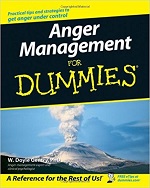_Understanding and_Preventing_Violence
- By conservative estimates, more than 16,000 violent crimes are committed or attempted every day in the United States. Violence involves many factors and spurs many viewpoints, and this diversity impedes our efforts to make the nation safer. Now a landmark volume from the National Research Council presents the first comprehensive, readable synthesis of America's experience of violence--offering a fresh, interdisciplinary approach to understanding and preventing interpersonal violence and its consequences. Understanding and Preventing Violence provides the most complete, up-to-date responses available to these fundamental questions:
- How much violence occurs in America?
- How do different processes--biological, psychosocial, situational, and social--interact to determine violence levels?
- What preventive strategies are suggested by our current knowledge of violence?
- What are the most critical research needs?
- 481 pages
By conservative estimates, more than 16,000 violent crimes are committed or attempted every day in the United States. Violence involves many factors and spurs many viewpoints, and this diversity impedes our efforts to make the nation safer.
Now a landmark volume from the National Research Council presents the first comprehensive, readable synthesis of America’s experience of violence–offering a fresh, interdisciplinary approach to understanding and preventing interpersonal violence and its consequences. Understanding and Preventing Violence provides the most complete, up-to-date responses available to these fundamental questions:
- How much violence occurs in America?
- How do different processes–biological, psychosocial, situational, and social–interact to determine violence levels?
- What preventive strategies are suggested by our current knowledge of violence?
- What are the most critical research needs?
Understanding and Preventing Violence explores the complexity of violent behavior in our society and puts forth a new framework for analyzing risk factors for violent events. From this framework the authors identify a number of “triggering” events, situational elements, and predisposing factors to violence–as well as many promising approaches to intervention.
Leading authorities explore such diverse but related topics as crime statistics; biological influences on violent behavior; the prison population explosion; developmental and public health perspectives on violence; violence in families; and the relationship between violence and race, ethnicity, poverty, guns, alcohol, and drugs.
Using four case studies, the volume reports on the role of evaluation in violence prevention policy. It also assesses current federal support for violence research and offers specific science policy recommendations.
This breakthrough book will be a key resource for policymakers in criminal and juvenile justice, law enforcement authorities, criminologists, psychologists, sociologists, public health professionals, researchers, faculty, students, and anyone interested in understanding and preventing violence.












